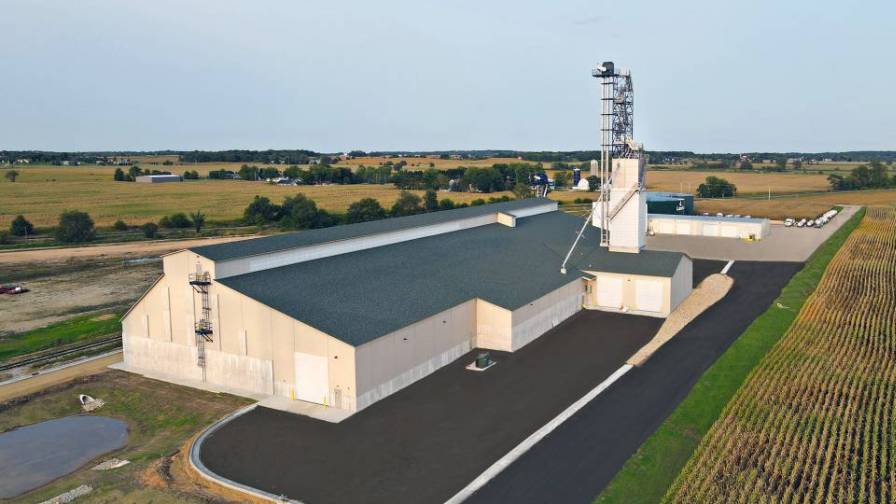Long-Term Lessons
No matter what the topic, it’s pretty clear that the saying “what goes up, must come down” doesn’t carry much weight anymore — especially in the fertilizer market.
“It was a good year,” says David Benefield, senior vice president of Frit, Inc. “It could have been a much better year, especially when you have $1,000 MAP (monoammonium phosphate) and $600 potash.” Benefield was just one of many in the industry who witnessed escalating prices in a short period of time.
“People get turned off pretty quick when prices start running up that high,” Benefield says. And while that may be true, micronutrient sales for 2008 still remained strong.
“Micronutrients in the past have typically cost a lot more than your NPK (nitrogen, phosphorus, and potassium) materials,” he adds. “Now we look like a bargain.”
Patience Is A Virtue
“Worldwide demand remained very high throughout the season,” says Dr. Dan Froehlich, U.S. agronomy manager of The Mosaic Co. “This led to rapidly increasing prices and spot fertilizer shortages.” For Mosaic, its preseason expectations were met, “but the road to the end was not predictable.”
Froehlich explains: “Cool, wet weather delayed fertilizer application, planting, and emergence of crops throughout North America.” These delays helped dealers sustain their supplies, but also led to a minimized spring application window.
Luckily, this season’s late planting didn’t inflict too many damaging blows to growers and micronutrient manufacturers. Field preparation in soggy soils could have caused severe side wall and soil compaction. “Growers were patient and very few cut back on the needed nutrients or reported compaction issues,” adds Froehlich.
Also experiencing a steady rise in sales was Stoller USA. “The micronutrient sales of our company were greatly over 25%,” says Jerry Stoller, president and CEO. “The irregular planting and the slow growth of the early planting of corn extended our season well passed the normal time period.”
The ‘Cutting Back’ Blues
As growers watch the NPK prices climb higher than their ears of corn, some are starting to cut back on select nutrients, deciding to forego any kind of dry application, which can lead to soil depletion.
“The grower needs to look at the crops requirement for balanced fertility, and often overlooking a micronutrient application can result in diminished yields when omitted from the fertility program,” says Jeff Ivan, manager of marketing for Tiger-Sul Products.
“If they don’t put out the P and the K, they’re certainly not going to put out the zinc to go with it,” Frit’s Benefield explains. “If you don’t use zinc, you’re not going to make the kind of crop you should make.”
In cut-back situations like this, education is key. “The biggest thing we learned [this season] was how many farmers ask retailers what they could do to increase yields,” Stoller says. He believes that retailers are lacking the necessary information farmers need to increase their yields.
Benefield adds: “I understand the nitrogen, phosphorous, and potash prices are at all-time highs, but so are the commodity prices.
“It doesn’t make economic sense for growers to cut their fertilizer application when they realize the commodity prices will more than compensate,” keeping in mind that this may not ring true for crops like potatoes, of which have not seen the rise that corn, wheat, and soybeans have seen, says Benefield. In order for growers to maximize their yields, retailers and manufacturers need to inform them that reducing a full fertilizer program is not the answer.
“There are a lot of people that can’t visualize paying that much for fertilizer, but by the same token, they probably can’t envision ever having gotten $8 a bushel for corn or $14 for beans,” Benefield concludes, especially when corn was $1.85 two years ago.
Combating Costs
Jereleen Brydon of Wolf Trax, Inc. recognized that increased NPK prices affected all crop input prices in a negative manner. “That being said, growers who required additional plant protection products certainly went ahead and purchased them, as crop prices offset these expenses,” Brydon says. “Fortunately we were able to maintain our prices throughout the year, so the cost of using our products was no greater than it was in 2007.”
Wolf Trax also benefited from comparatively low transportation costs. Because DDP Micronutrients are formulated as a dry dispersible powder, Wolf Trax was able to reduce fuel and shipping costs, which helped give them a leg up. “For example, one pallet of Wolf Trax DDP micronutrients replaces 13 pallets of typical granular micronutrients,” Brydon adds.
Unfortunately for Stoller, escalated raw material prices were rather frustrating. “We continuously had to put surcharges on due to the increase of nitrogen, phosphate, and potash.”
QC Corp. President Don Gordon has been told to expect 30% decreases in straight micronutrient inputs, thanks to rising NPK costs. “Where you may see a reduction in straight commodity micronutrient inputs, there will be a continued demand for specialty micronutrient combinations that have unique characteristics,” Gordon says. QC is currently working on slow release micronutrients that are totally water soluble.
Precision agriculture is another way micronutrient retailers and growers can fight costs. “The overall amount of fertilizer used has not decreased dramatically with precision ag, but the nutrient use efficiencies have improved,” Mosaic’s Froehlich explains. “This is good for the grower trying to maximize yield, good for the dealer who can maximize his effectiveness, and good for the environment by only applying the amount of fertilizer that is needed across the field.”
One other prominent trend in reducing fertilizer use came with acreages switching from corn to soybeans. “The economics for soybeans were very good,” Tiger-Sul’s Ivan says.
Froehlich adds: “There was some shifting from corn to soybeans, but not to the extent that was expected.”
What’s New? What’s Next?
From 4,000 acres last year, this year Stoller sold enough PowerPlus to cover 140,000 acres. PowerPlus helps corn crops use nitrogen more effectively. “Last year, we had yield increases where the lowest was 10 bushels per acre and the highest was 71 bushels per acre,” Stoller says. “This is the only product that Stoller ever developed where customers are selling other farmers.”
This August, Tiger-Sul increased in size with the addition of two new production facilities, one of which will be located in Stockton, CA. The company has also licensed its technology to Chemical Initiatives in Durban, South Africa, in an effort to balance fertility in the soils of the African continent.
For 2009, continuous corn will again be a hot topic as grain shortages are expected this fall. “Sulfur and zinc usage is more critical in continuous corn as the soil has less time to recharge,” Froehlich informs. “Sulfur and zinc deficiencies were noted throughout the Corn Belt in 2008.”
As for the years to come, retailers expect the increasing demand for micronutrients continue, particularly with the involvement of China and India as huge consumers. “Once people started getting fed well, they kind of like the idea of being fed well,” Benefield says.





